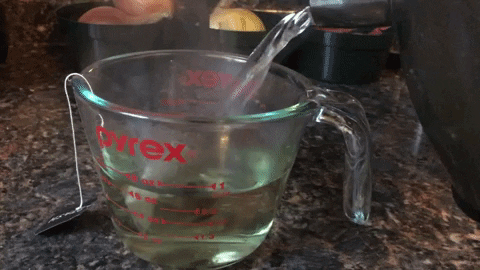Will homemade face wash make me break out in hives?

The scourge of acne snuck up on me in my early twenties. I was able to escape high school with little more than the occasional forehead zit, but midway through college, I suddenly had persistent pimples and blackheads that even the highest quality face masks couldn’t quell.
It took me years to figure out a skin regimen that worked for me. While I was on this journey, I must have tried every single face wash on the market, slathering chemical goos with mysterious ingredients all over my face in a desperate attempt to cleanse my face craters.
With homemade face wash, there is no mystery. Not only does making face wash help to reduce waste stream (pun not intended) in your bathroom, the ingredients in homemade face wash are less likely to wreak environmental havoc once they enter our waterways.
If I had known making homemade face wash was an option all those years ago on my skincare journey, I probably would have tried it. Though my twice-daily cleanser and morning and evening moisturizers earned fair ratings from the Environmental Working Group, I don’t know everything that I am putting on my buttonhole-sized pores every morning. I am nervous about making any changes to my current skin regimen might allow my cystic acne to creep back, but I’m willing to give it a shot.
Learning to try
I found a recipe for face wash from DIYNatural made with castile soap, chamomile tea, olive oil (an old favorite of mine, as you may remember from my DIY lip balm column) and essential oils.
Before I started, though, I wanted to select an essential oil that would be safe for my skin. Because essential oils are “natural,” they are often used with abandon, in ways that perhaps they should not. When it comes to skincare, science shows that some essential oils that may aid in healing, toning, and brightening skin. Others, however, can cause serious skin reactions and even chemical burns due to allergies and phototoxicity.
After some research, I found that tea tree, rosehip, frankincense, sandalwood, chamomile and lavender are among the essential oils that are not only safe for skin, but (however anecdotally) boast dermatological benefits. I chose lavender because it’s my favorite scent and I have about a thousand uses for lavender essential oil around my house. Plus, my skin has been dry lately (Maine winter comes for even the oiliest among us) and lavender can apparently help with crusty, flaky patches.
A trying experience
I started by brewing a strong cup of chamomile tea. I only needed a quarter cup, so as the instructions cheekily suggested, I enjoyed the rest while I waited for it to cool. I actually hate chamomile tea — I think it tastes like bathwater — but I wanted to commit to the process.

Then, I mixed the other ingredients: castile soap (the one I have is mint-scented), olive oil (note: it is difficult to accurately pour olive oil in quarter-teaspoon increments, but I did my best) and a few drops of essential oil. When I stirred it all together, it was the consistency of bacon fat (though perhaps I just have smoked meat on the brain). I added the cooled tea last, which diluted the concoction.
I transferred the homemade face wash to a travel-sized squeeze bottle but underestimated how much I had. My cup literally runneth over. I poured the remainder into an empty pill bottle.

Then, the moment of truth. Before bed, I used the homemade face wash instead of my normal cleanser. I couldn’t hide my nerves. Not only was I risking a passable adult complexion, but I was also putting my night’s sleep in jeopardy if my skin were to have a painful adverse reaction to the new goo.
Upon initial application, the homemade face wash stung slightly. The minty castile soap made it feel like I had applied menthol lip balm all over my face. I think my skin was in shock. The sensitive skin around my eyelids was especially irritated (once, a woman waxing my eyelids accidentally burned off the top layer of skin around my eyelids, so that skin is, let’s say, extra fresh).
I didn’t want to write my homemade face wash off just yet, though. I decided to attempt a good night’s sleep and try again in the morning. The stinging quickly subsided as my head hit the pillow — I’m willing to bet a lot of that was psychosomatic nerves

The next morning, I was already more accustomed to the face wash. I found the minty cleanser refreshing, and my face wasn’t any more irritated than with my regular face wash. I peered at the ingredients on my store-bought skincare products. They seemed so foreign compared to the simplicity of olive oil, chamomile tea and lavender.
My tried-and-true takeaways
After the initial adjustment, I found my homemade face wash refreshing and effective. It was also easy to make and incredibly cost-effective. I can tell you from experience that good skincare products can cost a small fortune for a tiny tub — definitely much more than the cost of a chamomile tea bag, splash of olive oil, cup of castile soap and a few drops of essential oil.
Admittedly, though, I probably will not be adding it to my daily routine because it took me so long to figure out a skin regimen that worked for me, and nothing strikes fear into my heart quite like the threat of cystic acne. If you are experimenting for yourself, however, I do not see any reason why you wouldn’t try homemade face wash, especially if conventional products do not seem to be working for you.
